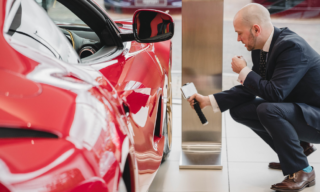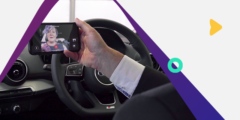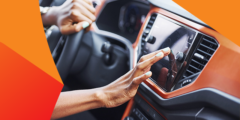As the wheels of the automotive industry begin to start turning again, retailers and OEMs are thinking about how they can adapt their customer journeys.
Ensuring that customers and staff remain safe is, of course, the primary objective. Retailers will also be putting steps in place to provide the best post-lockdown customer experience that continues to be as informative, exciting and reassuring to customers as it was before.
Traditionally, much of the car buying customer experience has relied on person-to-person contact. But in a world where social distancing is now an imperative, appointments with a retailer, in-person test drives, showroom demonstrations and elaborate handovers cannot be the same as they were.
The question is, how can you ensure that your customer journey remains engaging, while ensuring that it’s also as contactless as possible? In this blog, we’re going to look at how video could be key.
#keepingyouconnected
Video in the sales process
At CitNOW we’ve obviously always been advocates of using video in the automotive sales process, with our 10,000+ retailer based subscriptions sending over 10 million sales videos since we launched. With social distancing restrictions now in place, video – both live and recorded – can take even more of a role in helping you engage, sell and retain.
Customers buy based on emotion – a fact that no doubt everybody in the automotive sector is well aware of. In the absence of human-to-human contact, video can help create this emotional connection with the buyer – without making a physical one. It’s this emotional bond that gives the customer the confidence and trust to make a commitment – so it’ll likely be a critical part of your efforts to rebuild your pipeline while social distancing measures remain in place.
Video can also be really helpful at a practical level. It helps you respond quickly to customer enquiries, create engaging vehicle demonstrations and even hold virtual test drives. Confirming appointments via video is a good idea, too – we’ve seen that doing so can improve your show rate by up to 30%.
With the introduction of CitNOW Live Video (more on that here), you can now answer questions and establish rapport with your customer in real-time as well. Live video can be particularly helpful for sites unable to use video conferencing platforms for security and compliance reasons, and enables you to keep all your video communications to one app.

Even with live video beginning to take more of a role within the automotive sales process, in many instances recorded video may still be the most effective option. For example, recorded video can be especially useful in the enquiry follow up process as it doesn’t require the customer to be at the other end of a live video conversation. Recording your video and sending it to the customer to view when it suits them could save you hours of wasted time following up enquiries by telephone, and hopefully helping you respond to more of them – while also creating that key emotional connection.
To be most effective, we recommend a mix of both live and recorded video – ensuring you always tailor the customer experience to what works best for them.
Contactless handover videos
The handover is perhaps the most exciting part of the car buying journey. Whipping off the cover and taking photos with their new car is no doubt something that customers will miss in the era of contactless car buying.
But that doesn’t mean to say there aren’t things you can do to make it special. A video handover for example could be a good substitute for the typical handover experience. In fact, you can replicate much of the excitement of a physical handover with video.
Try recording a virtual reveal, replicating the normal process as much as you possibly can – including going through all the features of the customer’s new vehicle. You can then set up a live video call post-handover, with the customer in their new car and you in the showroom demonstrator, to answer general queries or to run through in-car tech. You can watch an example of a recorded and live handover video below.
Creating an engaging experience like this will also help build the emotional connection that customers are looking for – which, as we talked about earlier, will be critical to your sales now, and when the customer is considering their next car.
Using video post-sale
Video is also a useful tool in the aftersales process. Like pre-sales, it’s heavily dependent on the trust built between the customer and, in this case, the workshop technician.
Visually demonstrating any issues or areas of concern to an aftersales customer can greatly increase their ability to trust you, and therefore their likelihood to accept the work you’ve either already carried out, or are recommending to them.
Live video has a part to play here too, as it allows you to answer questions regarding problems with the car directly. You may even be able to hold a virtual diagnosis, while the customer’s car is on the drive.
Again, this two-way communication can be vital in the level of confidence the customer has in the technician – ultimately improving the likelihood of work being approved.
We hope this blog has helped you think about ways you can incorporate video into your own contactless customer journey – to both protect your customers and staff, and build your pipeline. Contactless does not need to mean emotionless – using video, you have plenty of opportunity to excite and delight just as you would have in the past.
We’re all in this together
We’re here to help – if you’re a CitNOW customer, our Customer Support team is available on 217-650-7467 or via email at help@citnow.com.





